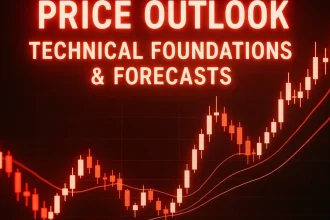Market Overview
The cryptocurrency market continues to exhibit dynamic movements, with Bitcoin (BTC) currently trading at $113,132, reflecting a slight decrease of 0.6% from the previous close. The intraday high reached $113,879, while the low touched $112,021. Ethereum (ETH) shows resilience, trading at $4,341.83, marking a 0.96% increase. The intraday high for ETH was $4,347.24, with a low of $4,209.91.
Regulatory Developments
The regulatory landscape for cryptocurrencies is undergoing significant transformations. In the United States, the Securities and Exchange Commission (SEC) has announced plans to overhaul capital markets regulations to better accommodate cryptocurrencies and blockchain-based trading. This initiative includes crafting clear guidelines to determine when a crypto token is classified as a security and introducing new disclosure requirements. SEC Chair Paul Atkins emphasized this as a “generational opportunity” to integrate digital assets into traditional finance.
In Europe, the European Union is accelerating its plans to introduce a digital euro. This move is partly in response to the U.S. Congress’s recent passage of the GENIUS Act, which regulates the $288 billion stablecoin market. The European Central Bank is considering utilizing public blockchains like Ethereum or Solana for the digital euro, aiming to modernize payment systems and reinforce the euro’s global role.
Institutional Adoption
Institutional interest in cryptocurrencies continues to grow. In Asia, wealthy families and family offices are increasingly investing in digital assets, driven by improved regulatory frameworks and broader institutional adoption. Wealth managers report growing interest and higher trading volumes, with firms like NextGen Digital Venture launching new crypto equity funds that have swiftly raised over $100 million.
In the United States, Tether, a leading cryptocurrency firm, has appointed former White House crypto adviser Bo Hines as a strategic adviser to guide its U.S. market expansion. Hines played a pivotal role in supporting the GENIUS Act and shaping broader crypto regulations. His appointment underscores Tether’s commitment to engaging with U.S. policymakers and bolstering its presence in the American market.
Technological Innovations
Technological advancements are shaping the future of cryptocurrencies. Visa has expanded its stablecoin settlement capabilities by adding support for USDG, PYUSD, and EURC, alongside the Stellar and Avalanche blockchains. Collaborating with Paxos and Bridge, Visa aims to enhance global payment processing through stablecoins, anticipating that payment use could exceed 50% of stablecoin transactions within a year.
PayPal has launched the “Pay with Crypto” feature, allowing U.S. small businesses to accept payments in 100 cryptocurrencies, including Bitcoin and Ethereum. This initiative integrates with major wallets like Coinbase and MetaMask, facilitating easier transactions and fostering inclusive, borderless commerce.
Market Trends
The total cryptocurrency market capitalization has reached a new all-time high of $4.15 trillion as of August 13, 2025, surpassing its previous peak of $3.73 trillion from December 2024. This milestone signals a full recovery from previous downturns and highlights the strength of the current cycle, with broad-based gains across both large-cap coins and altcoins driving the market to new heights.
Ethereum has broken the $4,000 barrier for the first time in months, trading at $4,547 as of mid-August. This surge is driven by the successful launch of multiple spot Ethereum ETFs and increased activity in decentralized finance (DeFi) and smart contracts. Standard Chartered has raised its year-end ETH target to $7,500, citing improved industry engagement and holdings.
Conclusion
The cryptocurrency landscape is experiencing rapid evolution, marked by significant regulatory developments, increased institutional adoption, technological innovations, and robust market trends. As digital assets continue to integrate into traditional financial systems, stakeholders must stay informed and adaptable to navigate this dynamic environment effectively.






